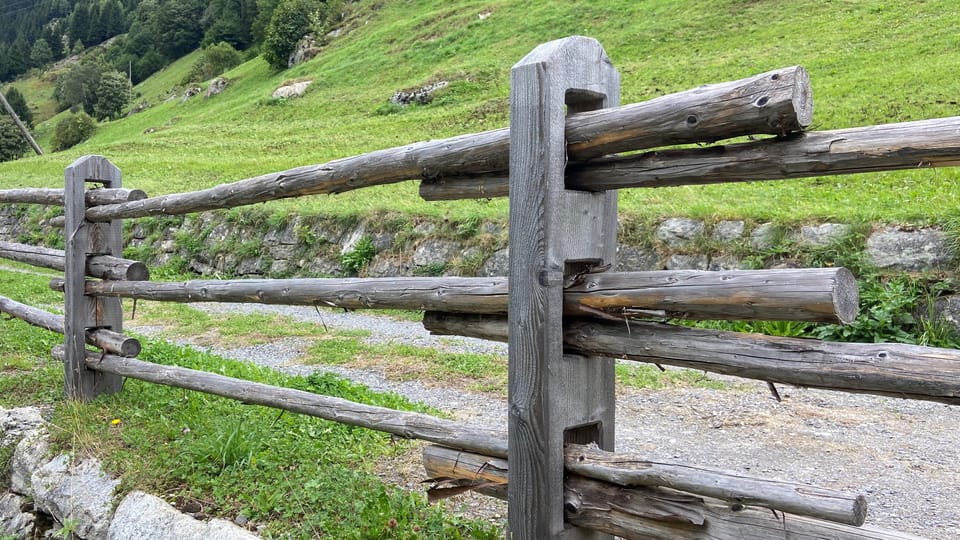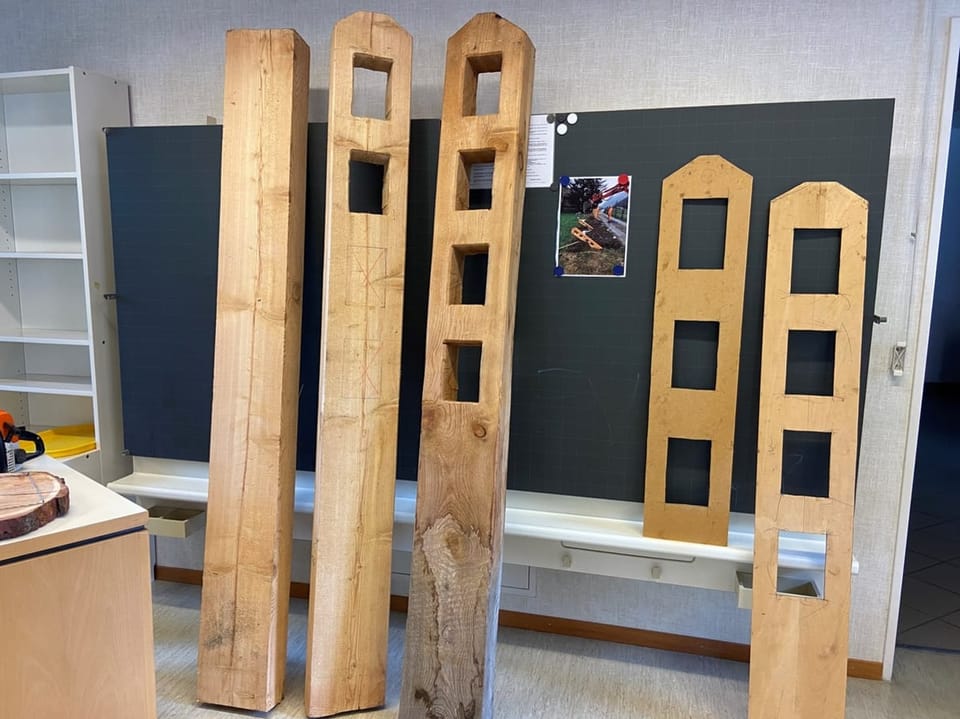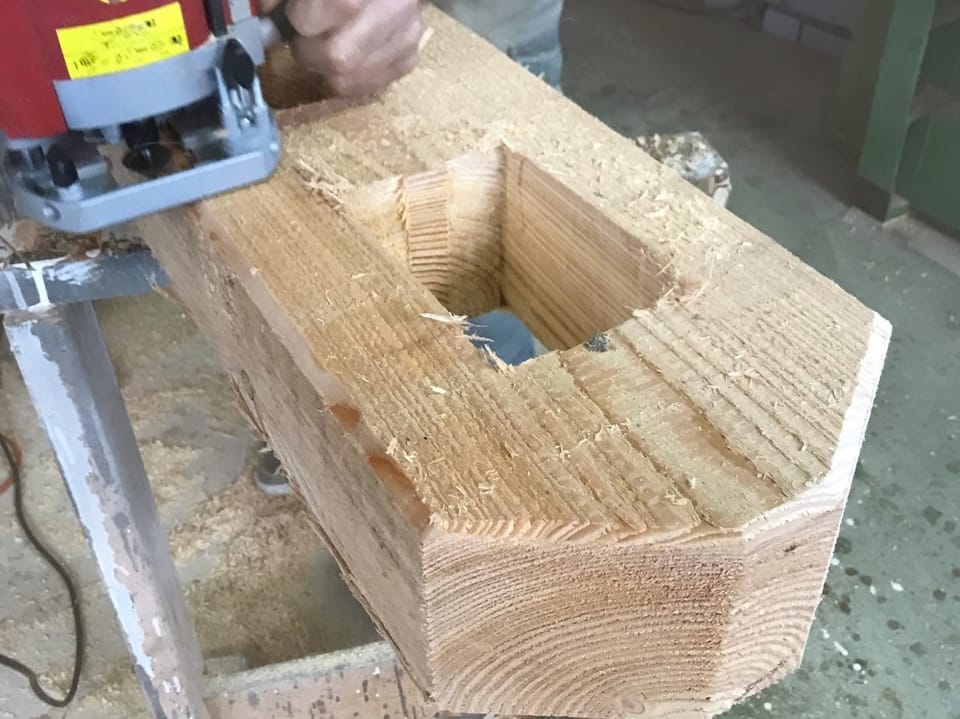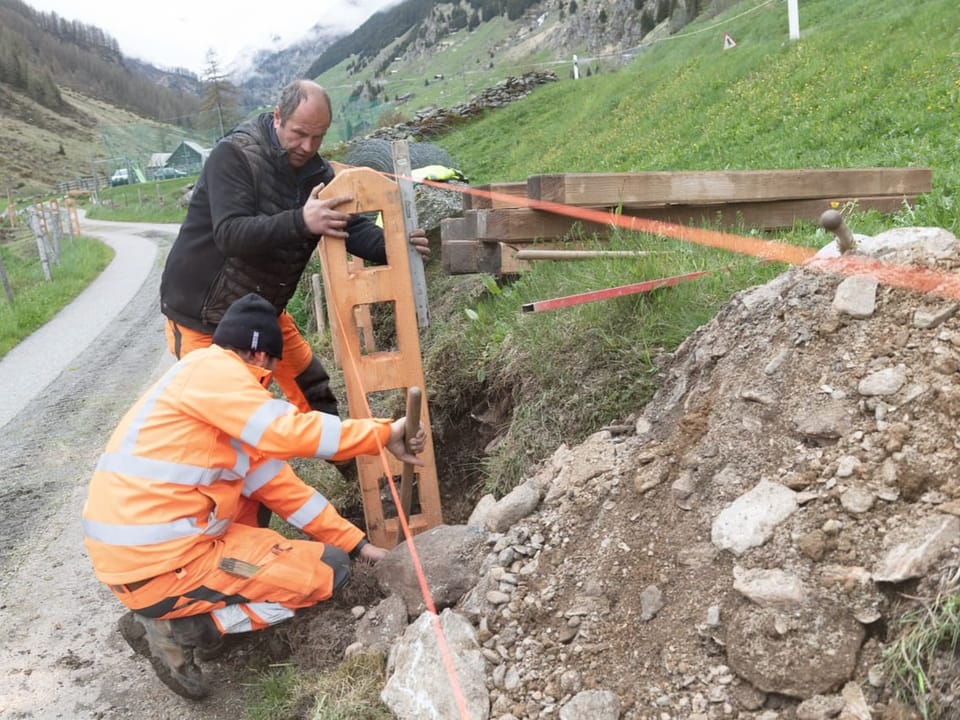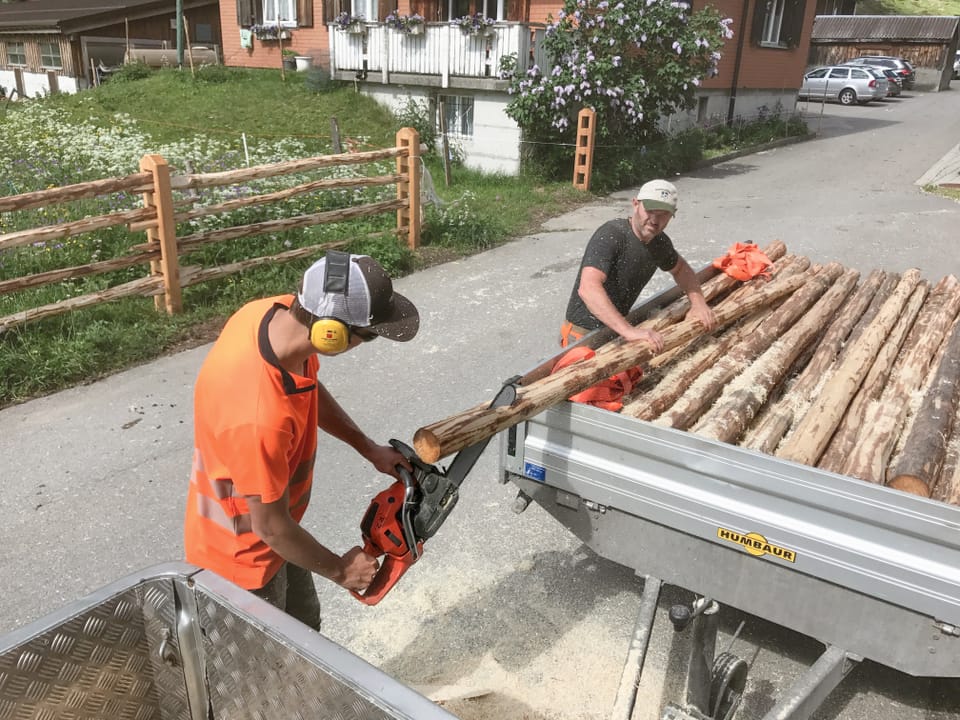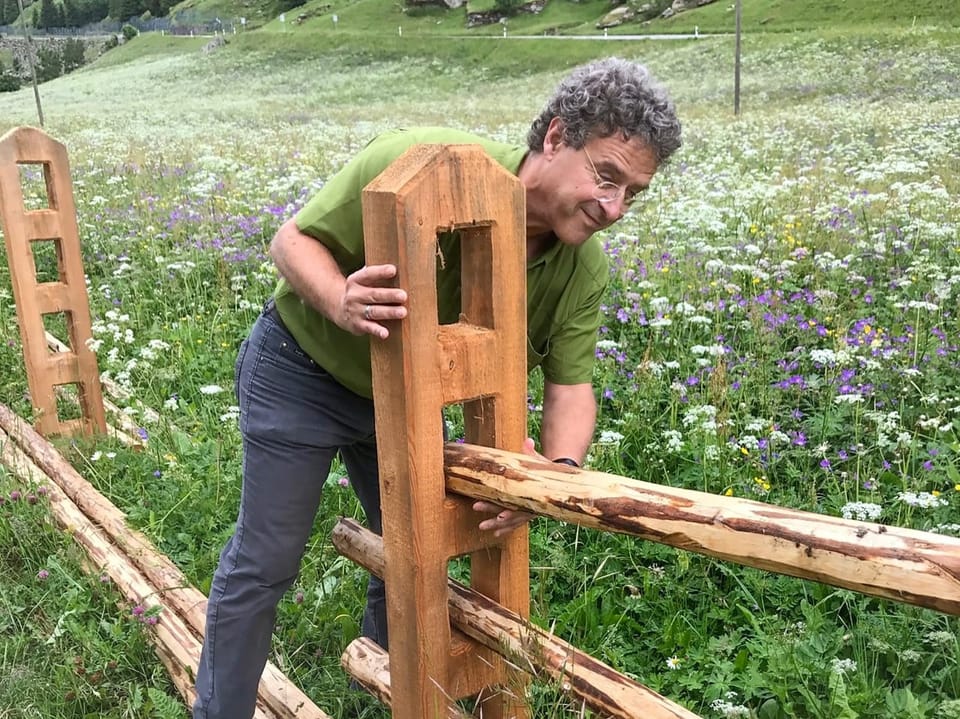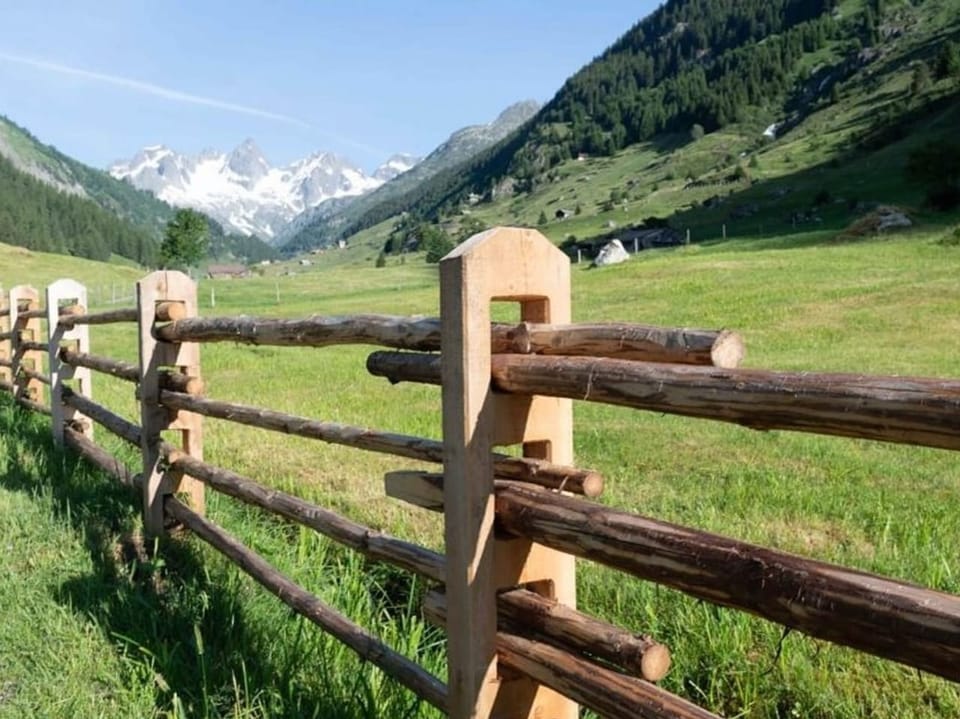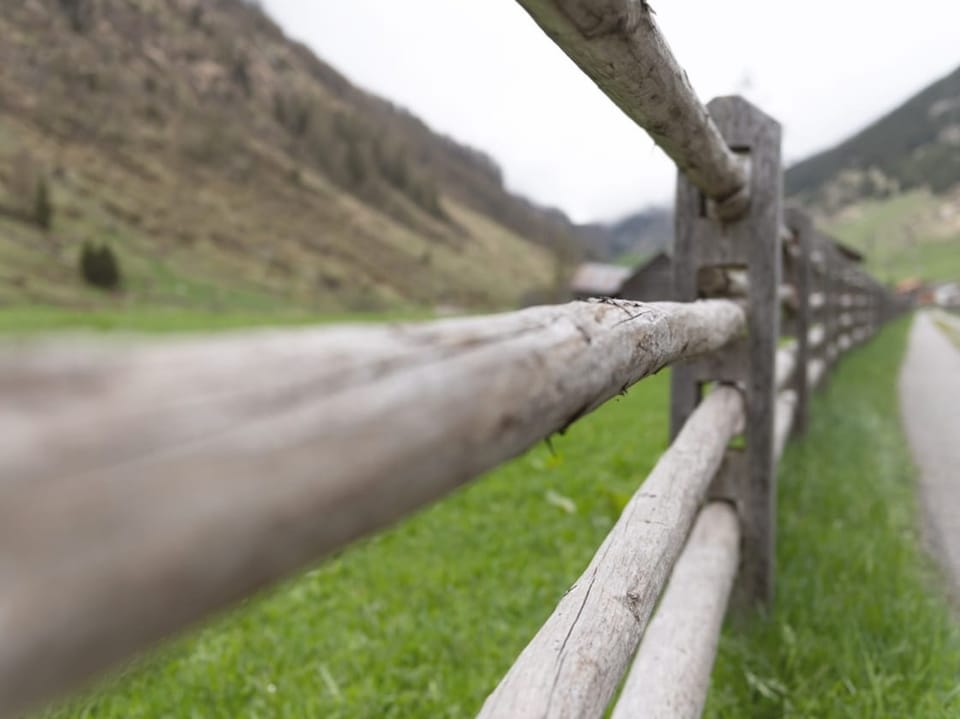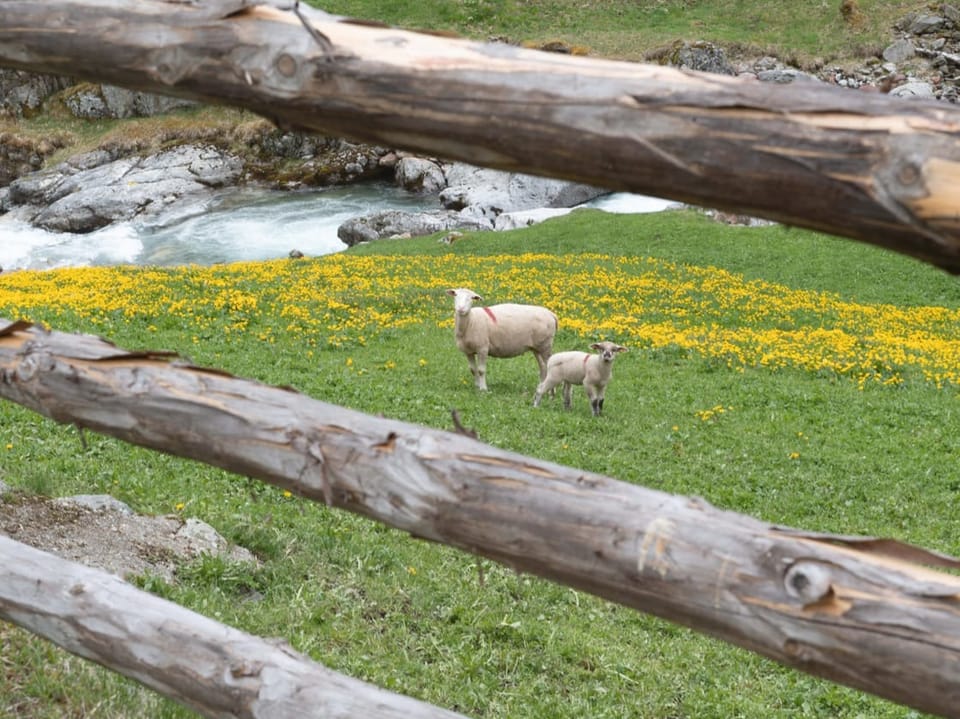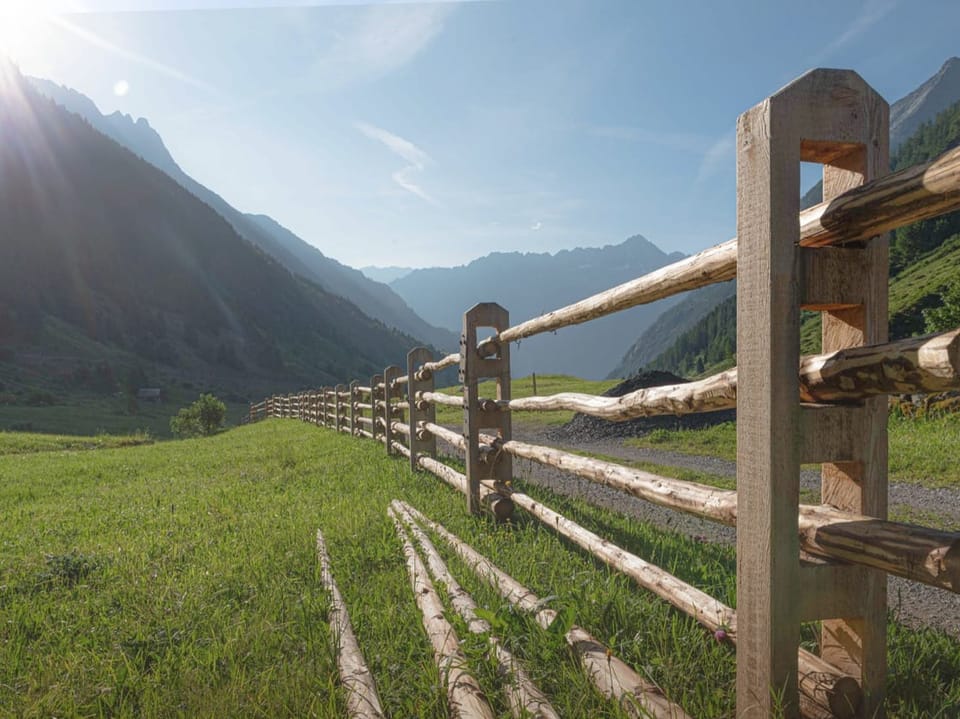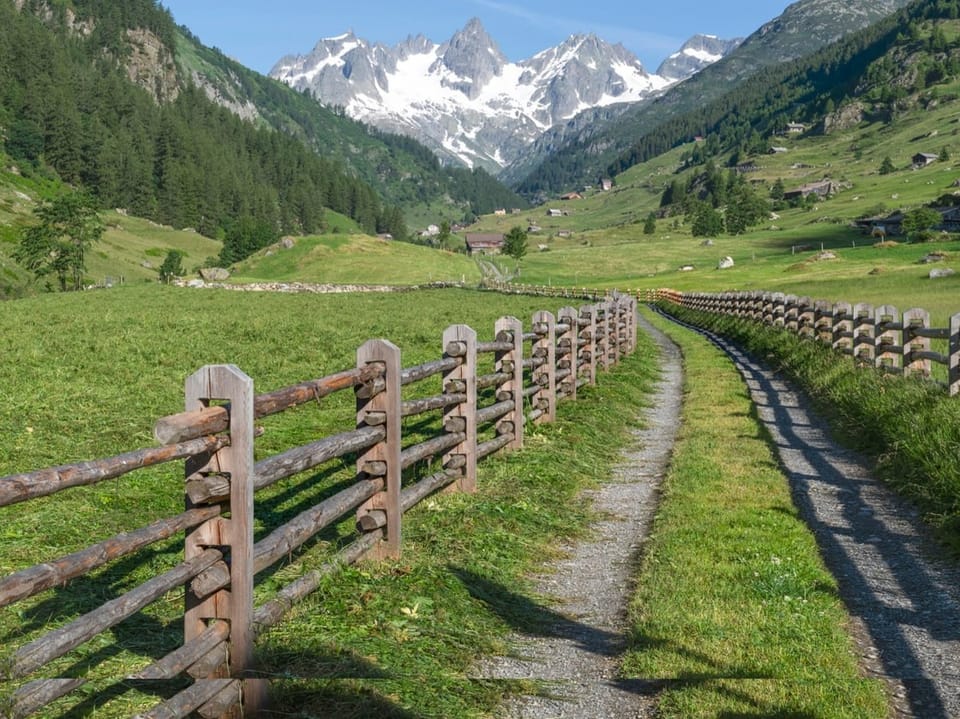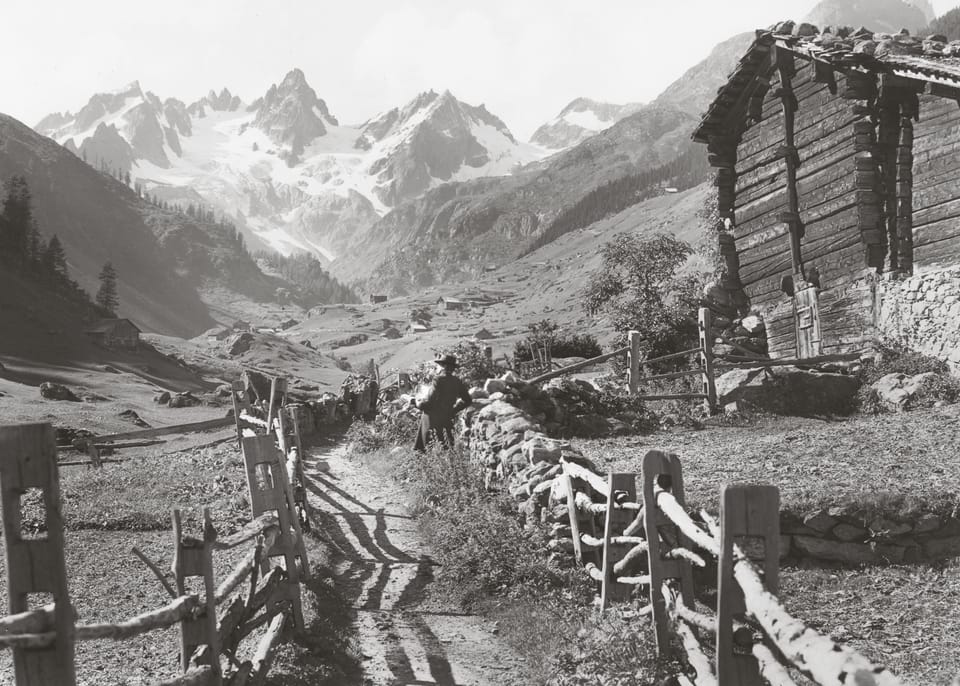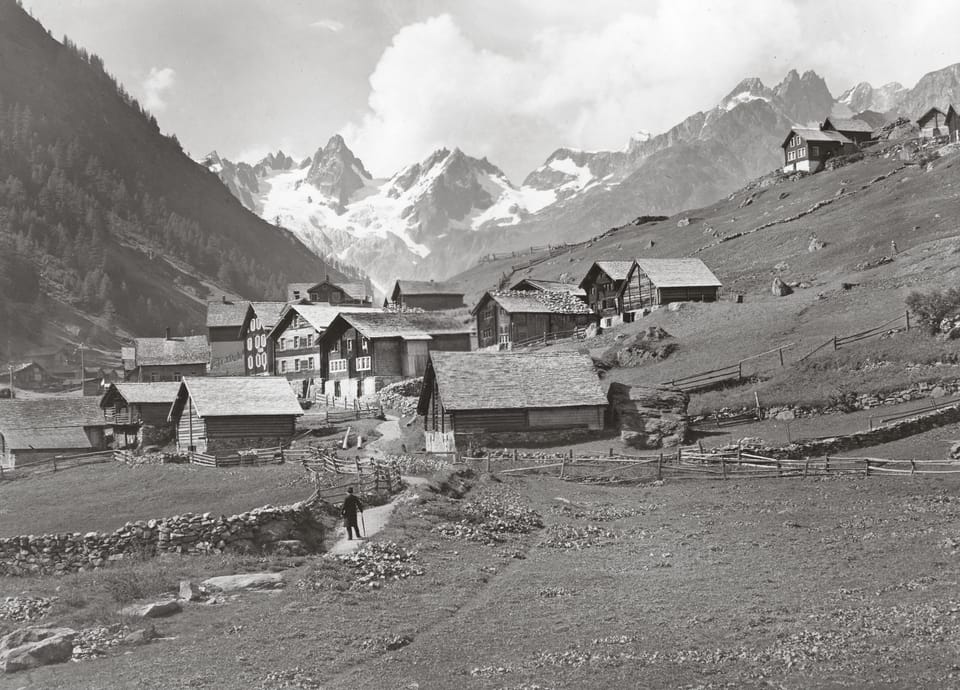Contents
In the remote Meiental there are wooden fences that cannot be found anywhere else. Now over 2000 wooden slats have been replaced.
At first glance they don’t seem to be anything special in the Swiss mountains: wooden fences along a path. And yet the wooden fences in Uri’s Meiental are something special.
Legend:
The typical Meiental wooden hag with the massive, stable posts made of larch wood and the crossbars made of spruce wood.
SRF
Because of their design and stability, they have been part of the region’s landscape for over 150 years and are so unique that they have even been included in the federal inventory.
Elaborate construction
Typical of Meientaler wooden fences are the massive posts made of larch wood, which are firmly anchored in the ground. The posts have square holes in which the cross beams lie. In such a way that you can open the “Hag” (as the people of Uri say) anywhere when cows or horses come into the meadow.
Making the wooden fence in its typical style requires craftsmanship. For example, the wooden posts are attached and anchored using special structures.
In recent years it has been noticed that broken fences are no longer being replaced. Pia Tresch, managing director of Pro Natura Uri, feared that the fences would disappear: “It is an old tradition here in the Meiental to put the fences like this. This is quite complex and has been neglected in recent years.”
7500 meters of wood from the region
According to Tresch, costs and time pressure also characterize agriculture in the Alpine region. “In some cases they even put up plastic fences. That can’t be it, we thought and decided to restore the Hag.” Pro Natura found various donors for the project.
Extensive reconstruction work
Several foundations, the canton of Uri and the Federal Roads Office took part in the reconstruction of the old wooden fences. The entire reconstruction was carried out gradually over several years. This is because a total of 7,500 meters of wood was needed and the wood comes from the region.
In some cases they even put up plastic fences. That can not be.
The Uri Meiental is a remote valley in impassable terrain. From the village of Wassen on the motorway it goes steeply up towards the Susten Pass. The old Sustenweg, on which the fences are located, is historically important as a mule track and is part of the federal inventory of historical transport routes.
The region’s landscape also includes the old wooden fences, which will now stand for several decades. In any case, Pro Natura set up a dedicated fund for annual maintenance.
Fences dominate the picture
The Meiental is a popular valley for hiking, but also a place affected by migration.
Fewer and fewer people live in the small hamlets along the Sustenweg, says Beat Zgraggen, reconstruction project manager: “In 1850, 460 people still lived in the valley. Now there are 65 people left. The climate in the valley is harsh and it is not easy to cultivate the soil.”
Popular photo subject despite migration
Cutting wood used to be a typical job in the winter months. “In winter the farmers had time to cut larch wood. There are often larch trees here.”
Historical photos show fences
The wooden fences were already a popular photo subject for travelers in the Meiental over 100 years ago. Many historical images in the Uri State Archives bear witness to this. And the joy can still be felt today, as Pia Tresch says: “We have already had a lot of positive reactions to the new Hag. There are hikers who write to us, but also experts from other cantons.”
In any case, the reconstruction figures are impressive. 568 larch posts and 2,153 wooden slats were used for 1.6 kilometers of wooden fence.
